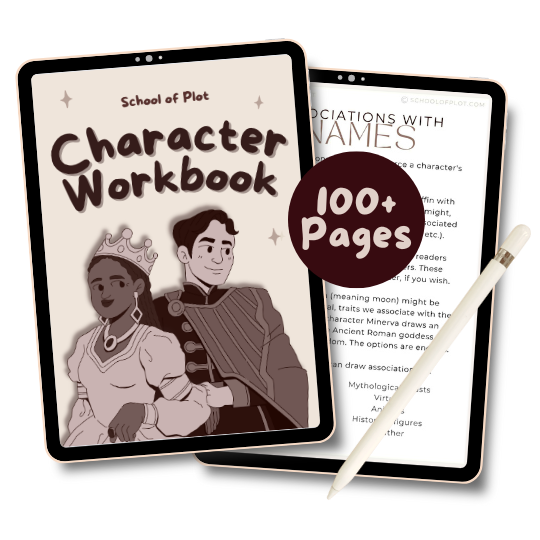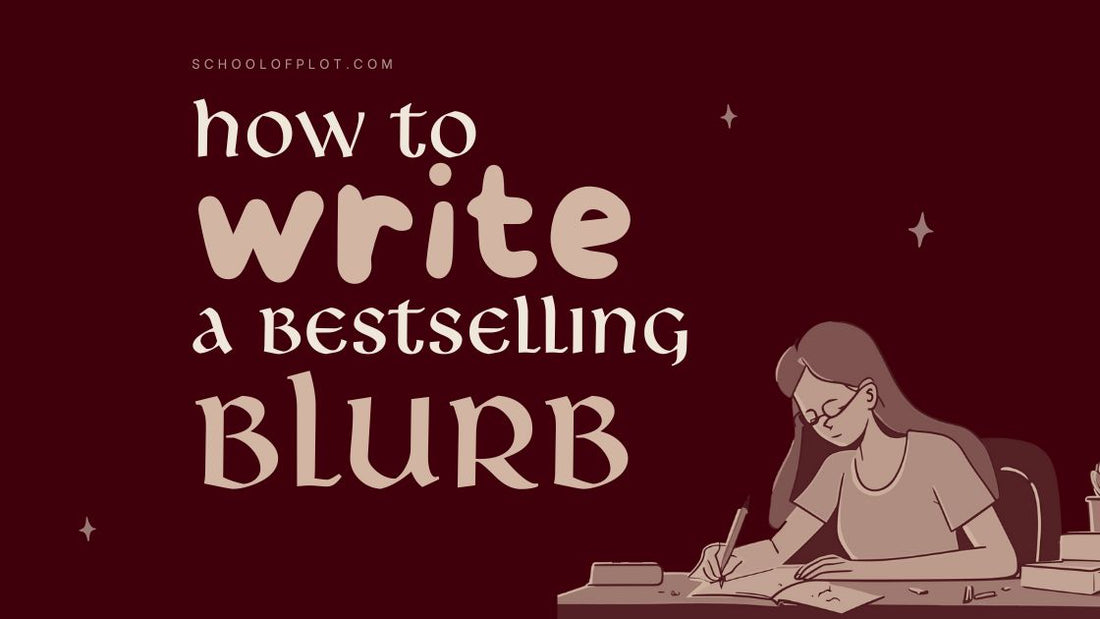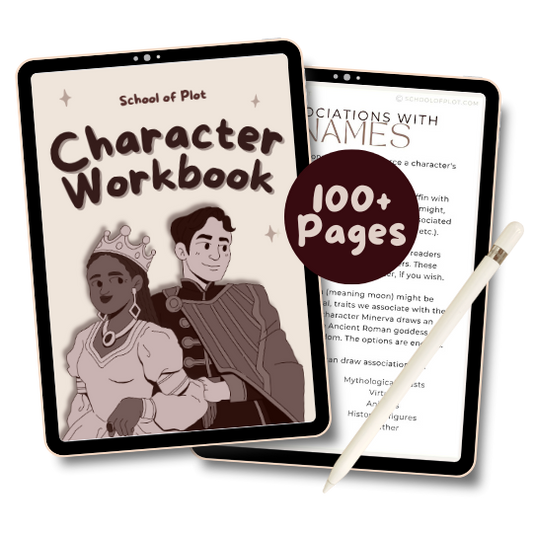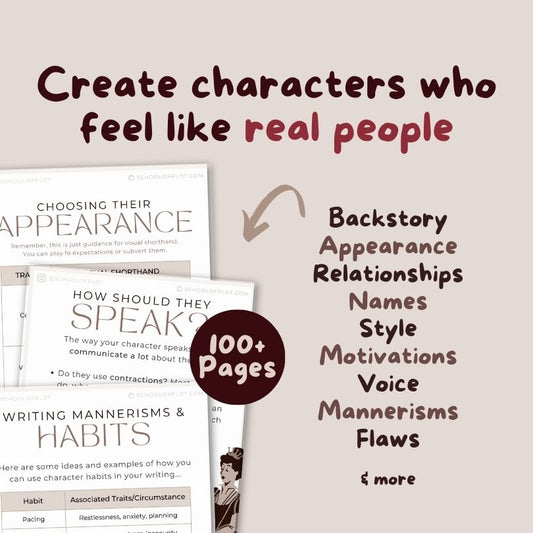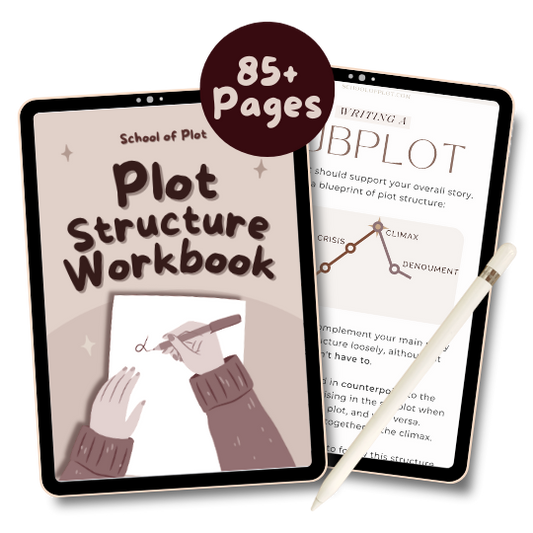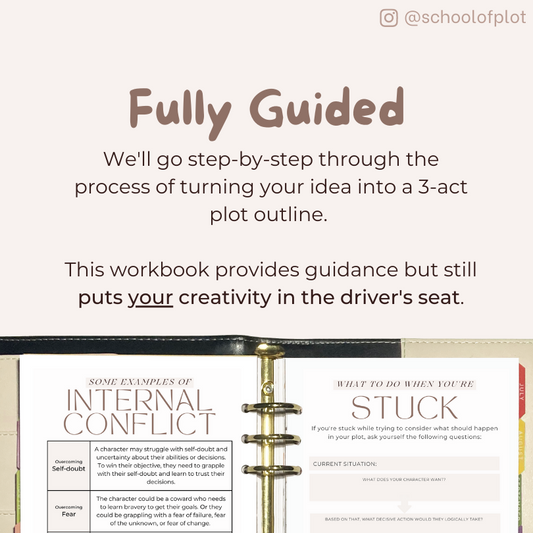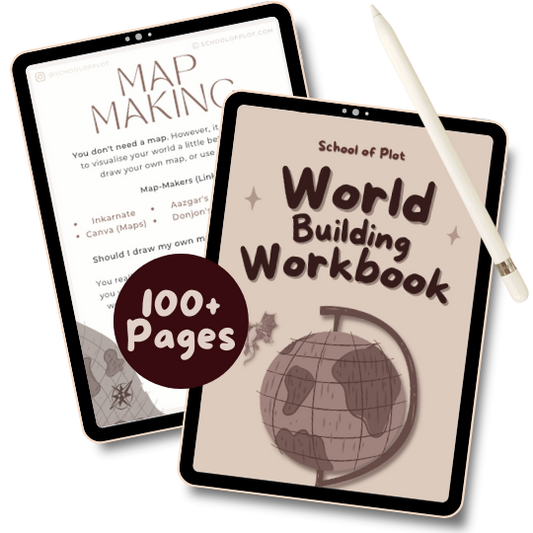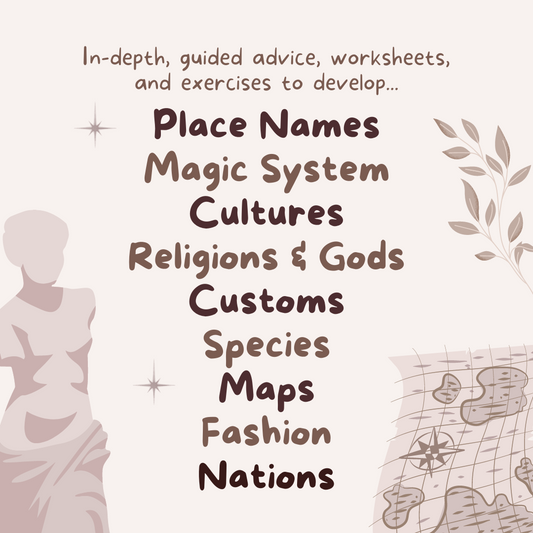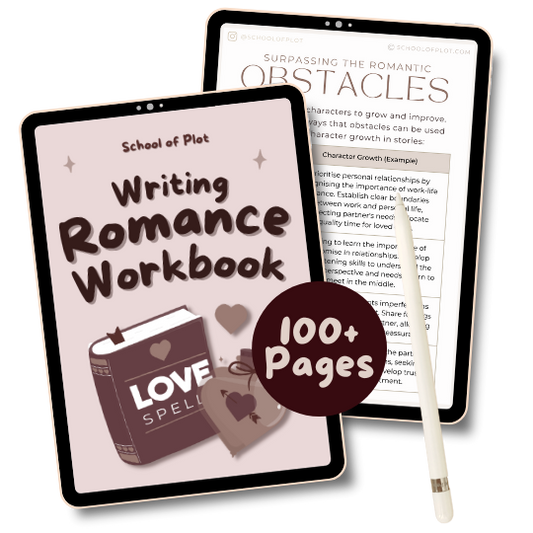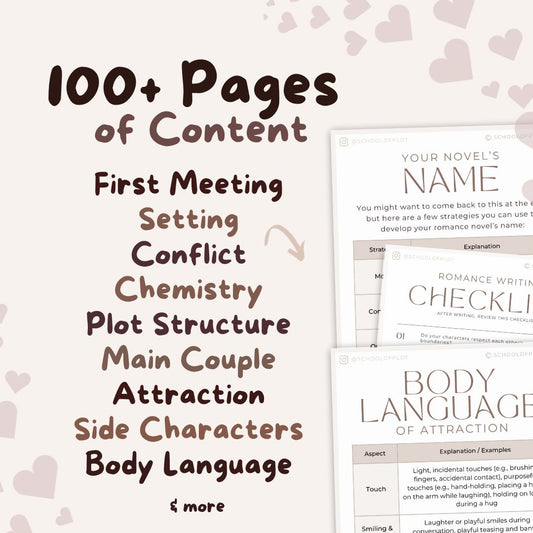Blurbs are the persuasive descriptions on the back cover of a book. In traditional publishing, a blurb also refers to an endorsement quote from a trusted source or well-known author that gets placed on the cover or inside pages of a book to promote it. We’ll be discussing the former.
Yesterday, a professional blurb-writer (and blurb writing coach) named Jessie Cunniffe joined me to answer all your frequently asked questions about blurbs. You can find our entire 1 hour chat for free on Spotify or Apple Podcasts. It’s an absolute masterclass. I also wrote up a blurb for my own fantasy WIP, which Jessie critiqued live. I highly recommend listening to her changes and applying that same eye to your own writing.
This post would've been nothing without Jessie's expert insights so please find her links in the "Resource" portion of this blog post!
Do you need to write your own blurb?
It depends. Indie writers 100% need to write their own blurbs (or pay a professional like Jessie) but traditionally published authors often don't. That said, they do need to write a query letter when they're seeking publication.
Your query letter contains a hook of 150-300 words which often reads like a blurb (and in fact often becomes your blurb, with minor tweaks, if you get published) so you'll find this advice actionable either way.
I'm personally planning on pursuing the trad route but I wrote a sample blurb of my fantasy WIP for this episode. Jessie did such a good job picking it apart on today's episode.

She justifies these choices very, very well. Have a listen!
How long should your blurb be?
There’s no concrete answer and trends are liable to change. Although blurbs tended to be around 150 words even a few years ago, they're trending shorter and shorter. Have a look at some blurbs in your genre to see how long they tend to be on average.
What’s the biggest mistake authors make when writing their blurbs?
A blurb is NOT just a summary or a synopsis, it's its own thing. A book blurb needs to have its own narrative arc that’s different to the narrative arc of your book. The blurb presents the first third (more or less) of your blurb in an exciting way with its own momentum.
How to write a blurb
Before we dive into this portion, I need to give a landslide of credit to Jessie from Book Blurb Magic. She gave an absolute masterclass which you can access for free on Spotify or Apple Podcasts (highly recommended).
Jessie identified that a lot of blurbs hit the same beats. She identified some key sections that many successful blurbs have. Here’s a summary of the stages she identified, but please do check out the full episode for a more thorough breakdown. I've also annotated the blurb of Terry Pratchett's Mort so we can use this as an example as we go through the steps.

The blurb of Terry Pratchett's Mort
Hook
Your blurb starts with a hook. This is different to a hook for a novel. If you want to hear about novel hooks, please check out this episode of Writing Club where a fantasy editor takes you through the hook-writing process (Spotify / Apple)
The hook is there to evoke curiosity. It's almost like clickbait, except you actually deliver. It's typically 1-2 sentences, around 12 words. Your goal with this is to get readers to keep reading the blurb.
Your hook can be...
- Broad questions that apply to even the reader. Not “Can the king ever regain his kingdom’s trust?” but more like “Can a lie, once told, ever truly be undone?
- A quote. Check the end of a chapters for some juicy hook quotes. These quotes often relate to the theme word (more on theme words in Jessie’s episode). An example is the hook from the blurb of Howl's Moving Castle:
"How about making a bargain with me?" said the demon. "I'll break your spell if you agree to break this contract I'm under."
- Statement with a mid-sentence twist (e.g. "They had always been a perfect couple, until a single lie unraveled everything.")
Remember, your hook isn't the same as a tagline. A tagline is the thing on the front cover. It's general, genre-focused. Your hook, on the other hand, is attached to the blurb and is more atmosphere- or story-focused.
For example, Pet Semetary has the tagline "A pet isn’t just for life" and the hook "The house looked right, felt right to Dr Creed."
My favourite hook is from Terry Pratchett's Mort:
“Death comes to us all. When he came to Mort, he offered him a job.”
If you read my blurb example from the top of this post, it doesn't include a hook! Jessie recommends adding one.
Setup
Situate us in your world or introduce the main character in around 3 sentences. Stick to things readers need to know. Only include the info they need in order to understand the protagonist and where they’re going.
To continue with the example of Mort, here's a setup:
"Death is the Grim Reaper of the Discworld, a black-robed skeleton with a scythe who ushers souls into the next world. He is also fond of cats and endlessly baffled by humanity. Soon Death is yearning to experience what humanity really has to offer, but to do that, he'll need to hire some help."
And the setup for my own blurb was this:
"Second in line to the throne but first in line for a pint, Lucien is too busy charming his way through life to worry about royal duties. But when a duel goes wrong and he unwittingly kills his older brother, Lucien finds himself heir to the crown."
(To address a FAQ: Am I scared of people stealing my work since I post it so much? I guess not. I have a big platform, especially over on Instagram, so I think people could call it out quickly).
Buildup
This is often the second paragraph, but sometimes it merges with the first. In the buildup, you elaborate on the situation the protagonist finds themselves in. This is generally the inciting incident (the catalyst – for more info about story stages you can check out this free cheat sheet. Man, so many free cheat sheets today!)
Why does the protagonist's life change forever? I'll continue with Mort...
"It's an offer Mort can't refuse. As Death's apprentice he'll have free board, use of the company horse—and being dead isn't compulsory."
Raise Stakes
Often but not always paragraph 3. What’s the main conflict of the story? What’s driving your MC? What happens if they don't go on the quest/holiday/job interview/children-fighting arena/magic school?
Stick to facts not just mc feeling’s or emotional monologue. You a relatable concrete reason to see what the consequences are. Something tangible like your life/job/relationship/little sister's life (to continue the Hunger Games example) is on the line. Focus on concrete details because we can’t bond with your character yet.
Punchline / Closer
This is what Jessie called the mic drop. The final sentence. This should leave your readers curious, shocked, excited or whatever emotion you want to leave them on. This ups the ante. It's not advised to end on a question – change it to a statement.
" It's a dream job—until Mort falls in love with Death's daughter, Ysabell, and discovers that your boss can be a killer on your love life…"
Extra info for indie writers
This part is optional but you can get your Amazon keywords in here if you're self-publishing. These are things like:
- “This is the 4th book in the series”
- “Contains enemies-to-lovers and found family" (or whatever tropes)
- CTA (like "buy now") for digital blurbs
For more information, you can check out Jessie’s free blurb writing cheat sheet, which you can find here. She also goes further into writing non-fiction blurbs in this download. I really recommend it. You need to enter your email but it's a fair trade. Plus her newsletter is really good.
Do you need to mention if it’s a multi-POV story?
Short answer, no. Some characters are important in the book, driving the story, but you may not need to mention them by name in the blurb.
It’s your own call whether you choose to focus on one of your PoV characters (like in my example) or give each one more attention. That said, some readers are looking for a multi-PoV story specifically. If you want to target them, mention it.
I’m going to show you some examples from multi-PoV books so you can see how other authors did it.
First of all we have Naomi Novik’s novel Spinning Silver, which has six PoV characters, including three main voices (Miryem, Irina and Wanda – or arguably just Miryem and Irina in the second half). I’ve highlighted the PoV characters’ names or descriptions, each one in its own colour.

Naomi Novik’s novel Spinning Silver
(Tangent: Stepon did not need to be a PoV character and I'll die comfortably on that hill as a fan.)
That's a long blurb! 178 words. It's from the back of my 2019 copy, so it's a pretty good example of how blurbs have shortened over the years. Although Irina ("unhappy daughter of a local lord") isn't named on this blurb, keep in mind that the "king of the Staryk" remains unnamed in the book.
The next blurb is from a recent bestseller. It's from multi-PoV book’s blurb is Hannah Kaner's Godkiller. This one’s got 4 PoV characters. Jessie pointed out that perhaps this one wasn’t the best written because there was some confusion about the PoV characters.

Hannah Kaner's Godkiller.
From this blurb, I thought Skedi was the love interest. Some sort of hot god that Kissen ends up falling for, perhaps. Turns out he’s more like a very powered-up rabbit. The actual love interest and the girl are also PoV characters, both with more page-time than Skedi, yet he’s the only one named in this blurb other than Kissen.
How do you write a dual-POV blurb?
This one's slightly different! While there's no concrete rule, you'd write it something like this:
- Paragraph 1: Introduce the first character and give readers insight into their life, desires, and the conflict they're facing.
- Paragraph 2: Do the same for the second character.
- Paragraph 3: Combine their perspectives and hint at the story’s central conflict or the emotional stakes.
Let's take this example from Alexandra Christo's To Kill a Kingdom, published in 2018. Although this blurb only has 2 paragraphs, you can see this structure.

Alexandra Christo's To Kill a Kingdom
Which POV should you use in the blurb?
Third person POV is the industry standard. First person POV is more accepted in the romance genre (but usually only if the actual story itself is told in that POV). If you're writing for a specific audience (e.g. "spicy" romance readers) who are looking for first POV stories, it could make more sense to mirror that in your blurb.
Do you need to write the blurb in the same tone as your novel?
It helps if you do! Capturing your manuscript's tone in your blurb makes sure you're appealing to the correct audience. One way to do this is to use words and phrases your characters use (you can see this a lot in comedic novels) or to mirror your novel's tone. Is it serious? Silly? Witty? Epic? Check out this example from Bridget Jones's Diary:
"As Bridget documents her struggles through the social minefield of her thirties and tries to weigh up the eternal question (Daniel Cleaver or Mark Darcy?), she turns for support to four indispensable friends: Shazzer, Jude, Tom and a bottle of chardonnay."
How many questions should you include in your blurb?
Jessie suggests 1 (or 2 at a maximum). A question can be a great hook but a weak way to end your blurb. A question often doesn’t raise the stakes as much we might want and can often be strengthened by rewording them into a statement. Too many can make your blurb sound like a 90s movie trailer but ultimately it's up to your how many questions you want to include in your blurb.
Should you include spoilers in your blurb?
No! You shouldn't! Although you should hint at the direction your book is going, don’t mention anything beyond 30% of the way through.
Sometimes your inciting incident feels like a spoiler but it's really not. It usually happens early on. Remember the "Lucien kills his brother" bit in mine? That all happens in chapter 1.
Free blurb-writing resources
Of course, the first thing I'm going to mention is the free 1 hour masterclass on blurbs that's up on Writing Club as of today. It's available on Spotify or Apple Podcasts. I've mentioned it twice already but it's really worth a listen.
I absolutely have to recommend Jessie's free downloadable PDF where she teaches the hidden formulas of salesworthy book blurbs. She also tackles non-fiction, which I didn't do at all in this post. Check it out for a really detailed breakdown of her formula.
If you want more information on writing hooks in particular, Jessie wrote a great article in Written Word Media, which you can find here. While we're at it, you should also check out her instagram account for quick tips.
Kindle also has a brief guide on writing blurbs. It's more technical than creative. You might find their "formatting your book description" and "book description restrictions" sections helpful.
Finally, you have my free PDFs. The plot structure template explains all the beats of your first 30%, which you can use to figure out what to include in your blurb.
